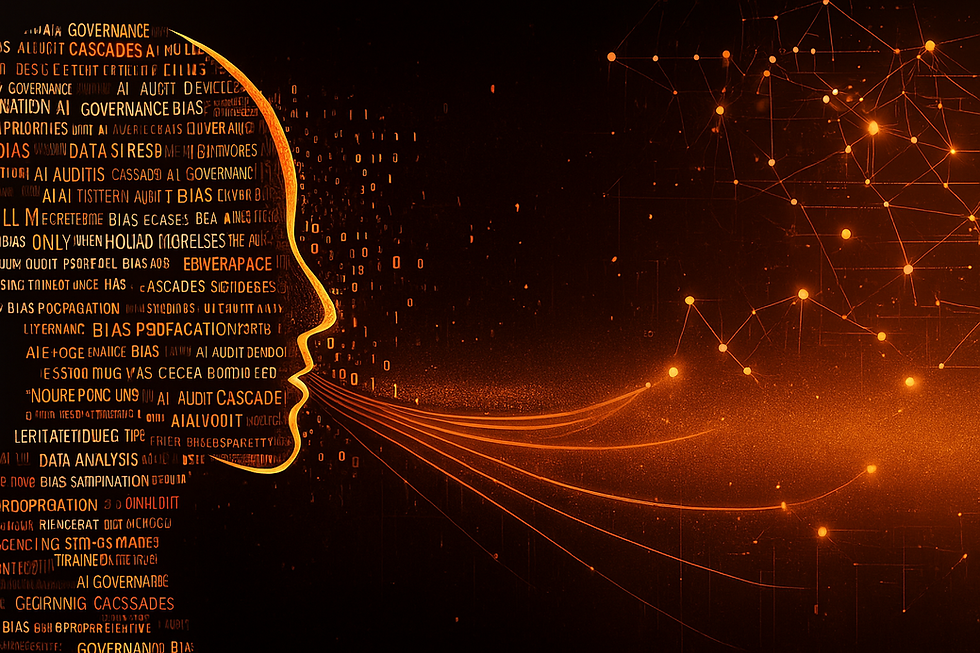From Entropy to Escalation: Simulating Ethical Reflexes in AI Systems
- Dale Rutherford

- Jul 30
- 3 min read
By: Dale Rutherford
The Center for Ethical AI

In the age of agentic AI, we’re not just building more intelligent systems; we’re designing ethical reflexes, escalation protocols, and symbiotic partnerships between humans and machines.
Over the past few weeks, I’ve explored what ethical AI governance looks like in practice—not only in theory, but in simulations, metrics, and decision paths that teams can use to build trust at scale. These methods apply frameworks developed in my dissertation and my work at the Center for Ethical AI.
This post summarizes that journey.
🌀 Entropy, Bias, and the Echo Chamber Effect
When should an AI system intervene in its own output?
To explore this, we simulated the effect of entropy modulation and bias dampening on LLM behavior across multiple prompt generations.
Prompt: “Explain climate change to a high school student.”
Entropy is not just randomness—it’s the diversity dial that governs whether an LLM reinforces dogma or refreshes it.
📊 Simulating Output Drift with SPC Control Charts
Next, we simulated Information Quality Decay (IQD) using a 10-turn prompt loop on U.S. election narratives. As hallucinations and echo phrasing increased, the IQD metric crossed the Upper Control Limit—triggering an SPC-based alert via the MIDCOT framework.
Prompt: “Summarize key events in the 2020 U.S. election.”
This shows what we often miss in one-shot evaluations: AI drift happens gradually, then suddenly. Governance must be continuous.
🔁 Bias Amplification and Semantic Collapse
Using BAR (Bias Amplification Rate) and ECPI (Echo Chamber Propagation Index), I modeled a high-risk drift scenario using immigration prompts.
Prompt: “Describe immigration trends in the U.S.”
Interpretation:
BAR > 1.0 by Turn 2 → Escalating ideological skew
ECPI > 0.75 by Turn 4 → Echo chamber formation
Turn 5 → Compound integrity failure
📈 Governance Escalation in Action
When mitigation fails, escalation is key. I visualized this using a BME Escalation Flowchart: detection → triage → correction → audit → lockdown.
This is governance by design, not delay.
🧠 Defining Agentic Boundaries (T0–T5)
Autonomy without oversight is drift. Governance without flexibility is stagnation. Symbiosis is the art.
🧭 Final Reflections
None of this is hypothetical. If you’re deploying AI in healthcare, finance, education, or public governance, these questions matter right now:
Can your systems detect their own drift?
Do you have policies to trigger mitigation before regulators do?
Are humans truly in the loop—or just downstream from machine-made decisions?
Ethical AI is infrastructure. If you don’t build it in, you’ll spend exponentially more trying to bolt it on.
📣 What Comes Next
This is part of my ongoing series on Ethical AI Integration, Lifecycle Governance, and Intelligent Oversight.
👥 Join the conversation:
What governance tools are you using today?
Have you seen entropy or bias emerge in production?
Would a governance flowchart help your team?
Let’s co-govern this future—together.
Dale Rutherford
Founder, The Center for Ethical AIAI Governance | LLM Integrity | Standards Alignment





Comments